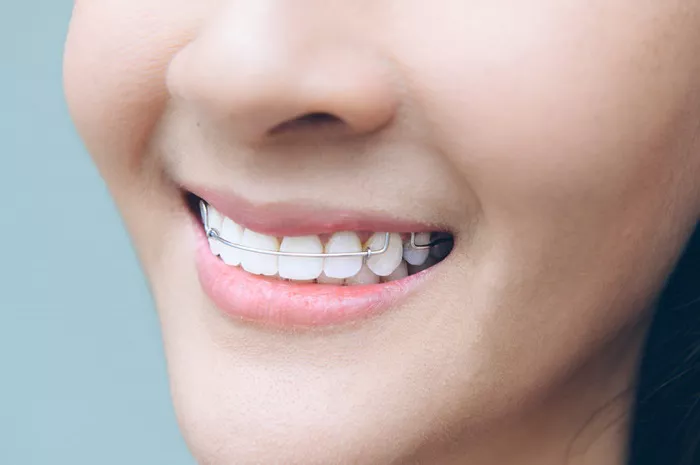Retainers play a crucial role in maintaining the results achieved through braces treatment. After months or even years of orthodontic work, retainers help to ensure that the teeth stay in their newly aligned positions. Understanding the process and time involved in making retainers is important for both patients and dental professionals.
The Initial Steps and Impressions
The journey of creating retainers begins with taking accurate impressions of the patient’s teeth.
Taking Impressions:
The dentist or orthodontist will use a special material, usually a putty-like substance, to create molds of the upper and lower arches of the teeth. This process requires the patient to bite down firmly into the impression material for a short period, usually around 30 seconds to a minute. The impressions need to capture the exact shape and position of the teeth as they are at the end of the braces treatment. Any inaccuracies in the impressions can lead to ill-fitting retainers. For example, if the patient moves or the impression material is not properly mixed or placed, it may result in a distorted mold, which in turn can cause problems with the final retainer fit.
Sending the Impressions:
Once the impressions are taken, they are carefully packaged and sent to a dental laboratory. The laboratory is where the actual fabrication of the retainers takes place. The shipping process can take anywhere from a day to a few days, depending on the location of the dental office and the laboratory, as well as the shipping method used. Some dental offices may have an in-house laboratory, which can significantly reduce this transit time.
Laboratory Fabrication Process
At the dental laboratory, a series of steps are carried out to create the retainers.
Model Creation:
The first step in the laboratory is to pour plaster or a similar material into the impressions to create accurate models of the patient’s teeth. This process allows the technicians to have a three-dimensional representation of the teeth to work with. It usually takes a few hours for the plaster to set and harden completely. Once the models are ready, the technicians can begin the process of designing and fabricating the retainers.
Material Selection and Fabrication:
There are different types of retainers, with the most common being Hawley retainers and clear plastic retainers. For Hawley retainers, a metal wire is bent and adjusted to fit around the teeth on the model, and acrylic is then molded to cover the palate or the lingual side of the teeth. This process can take about 1 to 2 days, as it involves multiple steps of shaping and fitting the wire and acrylic. Clear plastic retainers, on the other hand, are made using a thermoforming process. A thin sheet of clear plastic is heated until it becomes pliable and then vacuum-formed over the model of the teeth. This process is relatively quicker, usually taking about half a day to a full day. However, the quality control and finishing touches, such as trimming the edges of the retainer to ensure a smooth fit, can add additional time.
Quality Control and Adjustments
Before the retainers are sent back to the dental office, they undergo quality control checks.
Fit and Alignment Checks:
The laboratory technicians carefully examine the retainers to ensure that they fit snugly over the models of the teeth. They check for any gaps or areas where the retainer may not be in proper contact with the teeth. If any issues are found, adjustments are made. This could involve trimming the retainer, smoothing out rough edges, or making minor modifications to the wire in a Hawley retainer. These quality control and adjustment processes can take anywhere from a few hours to a day, depending on the complexity of the problems detected.
Sterilization and Packaging:
Once the retainers pass the fit and alignment checks, they are sterilized to ensure they are free from any contaminants. They are then packaged in a way that protects them during transit back to the dental office. This packaging process usually takes a short amount of time, about an hour or so.
Return to the Dental Office and Final Fitting
The completed retainers are then sent back to the dental office.
Receiving and Scheduling:
When the dental office receives the retainers, they schedule an appointment for the patient to come in for the final fitting. This scheduling may take a day or two, depending on the availability of both the patient and the dentist. The patient is then called in to try on the retainers.
Final Fitting and Instructions:
At the final fitting appointment, the dentist checks the fit of the retainers in the patient’s mouth. They ensure that the retainers are comfortable and that the teeth are properly seated within the retainer. The dentist also provides the patient with instructions on how to wear and care for the retainers. This appointment usually takes about 30 minutes to an hour. If any minor adjustments are needed, such as a slight trimming of the retainer to relieve pressure on a particular area, the dentist can make these adjustments on the spot.
Conclusion
In total, from the time the impressions are taken until the patient has their final fitting of the retainers, the process can take anywhere from about a week to two weeks. Retainers are a vital part of maintaining the results of braces treatment, and the time and care taken in their fabrication contribute to their effectiveness in keeping the teeth in their new, aligned positions. Dental professionals also need to manage patient expectations and ensure that the process runs smoothly to provide the best possible outcome for the patient’s post-orthodontic care.

